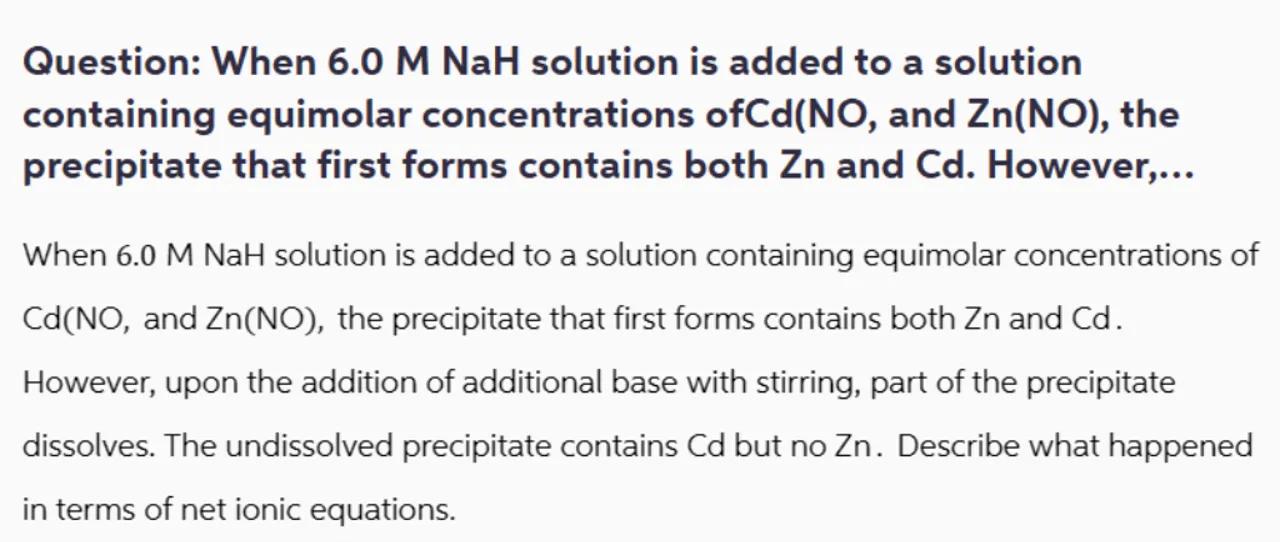
Sia
Question: When solution is added to a solution containing equimolar concentrations of , and , the precipitate that first forms contains both and . However,...
When solution is added to a solution containing equimolar concentrations of , and , the precipitate that first forms contains both and .
However, upon the addition of additional base with stirring, part of the precipitate dissolves. The undissolved precipitate contains but no Zn. Describe what happened in terms of net ionic equations.

Answer from Sia
Posted over 1 year ago
Solution
1
Identify the initial reaction: When is added to a solution containing equimolar concentrations of and , both and precipitate out initially. The net ionic equations for these reactions are:
2
Addition of more base: Upon the addition of more , dissolves because it forms a soluble complex ion, . The net ionic equation for this reaction is:
However, does not form a similar soluble complex and remains undissolved
3
Final precipitate: The undissolved precipitate contains only because has dissolved in the excess
Answer
The undissolved precipitate contains but no .
Key Concept
Solubility of hydroxides in excess base
Explanation
dissolves in excess to form , while does not form a soluble complex and remains as a precipitate.
Not the question you are looking for? Ask here!
Enter question by text
Enter question by image
Unlock Smarter Learning with AskSia Super!
Join Super, our all-in-one AI solution that can greatly improve your learning efficiency.
30% higher accuracy than GPT-4o
Entire learning journey support
The most student-friendly features
Study Other Question